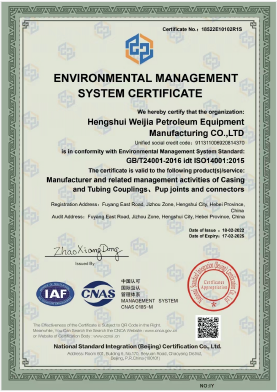- Afrikaans
- Albanian
- Amharic
- Arabic
- Armenian
- Azerbaijani
- Basque
- Belarusian
- Bengali
- Bosnian
- Bulgarian
- Catalan
- Cebuano
- Corsican
- Croatian
- Czech
- Danish
- Dutch
- English
- Esperanto
- Estonian
- Finnish
- French
- Frisian
- Galician
- Georgian
- German
- Greek
- Gujarati
- Haitian Creole
- hausa
- hawaiian
- Hebrew
- Hindi
- Miao
- Hungarian
- Icelandic
- igbo
- Indonesian
- irish
- Italian
- Japanese
- Javanese
- Kannada
- kazakh
- Khmer
- Rwandese
- Korean
- Kurdish
- Kyrgyz
- Lao
- Latin
- Latvian
- Lithuanian
- Luxembourgish
- Macedonian
- Malgashi
- Malay
- Malayalam
- Maltese
- Maori
- Marathi
- Mongolian
- Myanmar
- Nepali
- Norwegian
- Norwegian
- Occitan
- Pashto
- Persian
- Polish
- Portuguese
- Punjabi
- Romanian
- Russian
- Samoan
- Scottish Gaelic
- Serbian
- Sesotho
- Shona
- Sindhi
- Sinhala
- Slovak
- Slovenian
- Somali
- Spanish
- Sundanese
- Swahili
- Swedish
- Tagalog
- Tajik
- Tamil
- Tatar
- Telugu
- Thai
- Turkish
- Turkmen
- Ukrainian
- Urdu
- Uighur
- Uzbek
- Vietnamese
- Welsh
- Bantu
- Yiddish
- Yoruba
- Zulu
tubing collar
Understanding Tubing Collars Essential Components in Oil and Gas Operations
In the oil and gas industry, the importance of reliable equipment cannot be overstated. One crucial component that often flies under the radar is the tubing collar. While they may seem like small, peripheral parts of the overall operation, tubing collars are vital for ensuring the integrity and efficiency of wellbore systems.
What is a Tubing Collar?
A tubing collar is a device used to connect sections of tubing within a well. Tubing refers to the pipe that allows oil and gas to flow to the surface from the reservoir, while the collar serves as a junction point between these tubing sections. The design of a tubing collar typically includes threaded ends, which allow for easy connection and disconnection of tubing segments. This functionality is essential for efficient drilling operations, maintenance, and servicing of oil wells.
Types of Tubing Collars
There are several types of tubing collars to suit various applications, including
1. Regular Tubing Collars These are the standard collars used in most operations. They feature a simple design with male and female threads for easy connection.
2. Swaged Collars These collars are formed through a process that creates a smooth transition between tubing sections. This design minimizes turbulence and enhances the flow of fluids.
3. Safety Collars Safety collars are equipped with mechanisms that prevent the unintentional separation of tubing sections, which can be crucial in high-pressure environments.
4. Pup Joints Although not strictly a collar, pup joints serve a similar purpose by allowing for slight adjustments in the length of the tubing string. They can function as tubing collars, connecting sections of tubing effectively.
Importance of Tubing Collars
tubing collar

The role of tubing collars extends beyond mere connectivity
. They provide structural support to the tubing system, help maintain optimal pressure conditions, and facilitate the smooth flow of fluids. Without reliable collars, the integrity of the entire wellbore structure can be compromised, leading to potential leaks, operational inefficiencies, and increased costs.Moreover, tubing collars enable easier maintenance. In the event of a blockage or failure, workers can quickly disconnect sections of tubing and replace the faulty components without extensive downtime. This quick response capability is essential in maintaining productivity in an industry where time is money.
Installation and Maintenance
Proper installation and regular maintenance of tubing collars are imperative to ensure their longevity and performance. During installation, collars must be torqued to the manufacturer’s specifications to avoid over-tightening or under-tightening, both of which can lead to failures. Regular inspections should also be conducted to check for signs of wear, corrosion, or damage, which could compromise the integrity of the tubing string.
Additionally, the choice of materials is vital in the design of tubing collars. Materials must be resistant to the harsh conditions found in oil and gas operations, including high pressures, corrosive fluids, and extreme temperatures. Common materials used include carbon steel, stainless steel, and various alloys specifically designed for oil and gas applications.
Advancements and Future Trends
As technology evolves, so do the designs and functionalities of tubing collars. Recent advancements have introduced smart collars equipped with sensors that monitor pressure, temperature, and other vital parameters in real time. These innovations allow for improved data collection and analysis that can enhance operational efficiency and predict potential issues before they escalate into costly problems.
Sustainability also plays a significant role in the future of tubing collar design. The industry is increasingly seeking environmentally friendly materials and methods that reduce the ecological footprint of operations. Innovations in materials science may lead to the development of collars made from biodegradable or recycled materials, contributing to a more sustainable oil and gas industry.
Conclusion
In the high-stakes world of oil and gas, every component plays a vital role in ensuring success. Tubing collars, although often overlooked, are integral to maintaining a safe, efficient, and productive operation. As technology progresses, the future of tubing collars looks promising, with enhancements in functionality and sustainability paving the way for continued advancements in the industry. Understanding the importance of these components is essential for anyone involved in oil and gas operations, from engineers to field workers, who play a part in ensuring the continued flow of energy resources around the globe.
-
Well Casing Extension Couplings – Applications and InstallationNewsJun.06,2025
-
Types of Crossover Subs in Drilling & CompletionNewsJun.06,2025
-
Key Features of High-Quality Tubing Pup JointsNewsJun.06,2025
-
Installation and Maintenance Tips for Steel Couplings for PipeNewsJun.06,2025
-
How to Select the Right Pup Joint for Oil & Gas OperationsNewsJun.06,2025
-
Applications of Stainless Steel Pipe CouplingsNewsJun.06,2025







